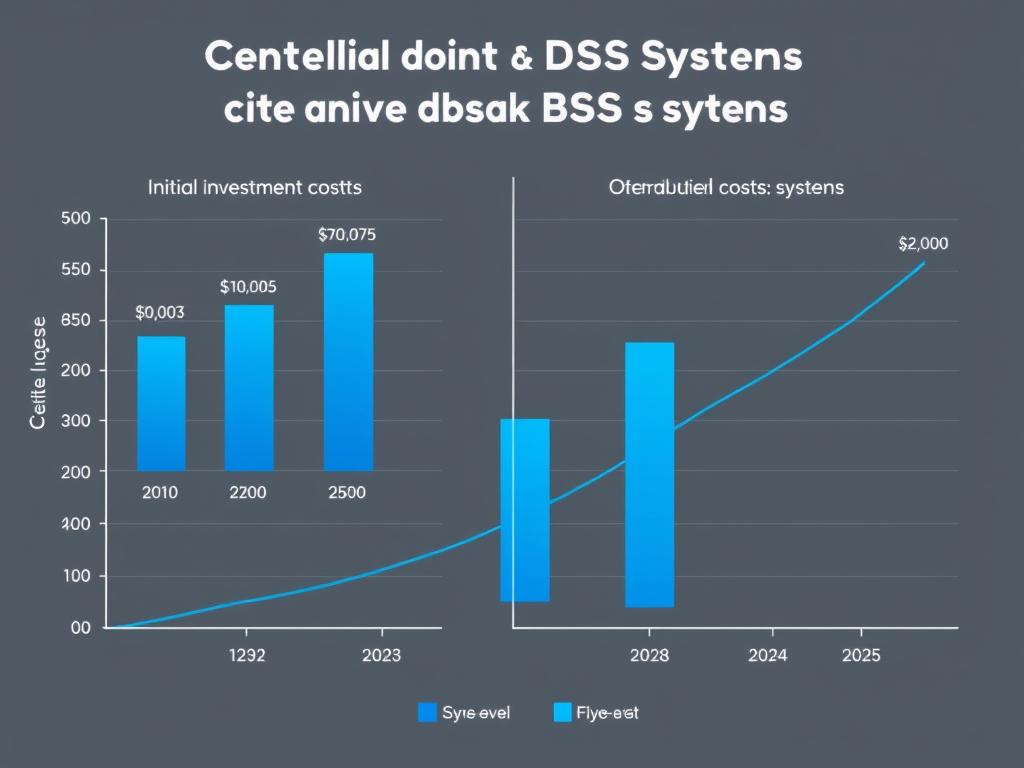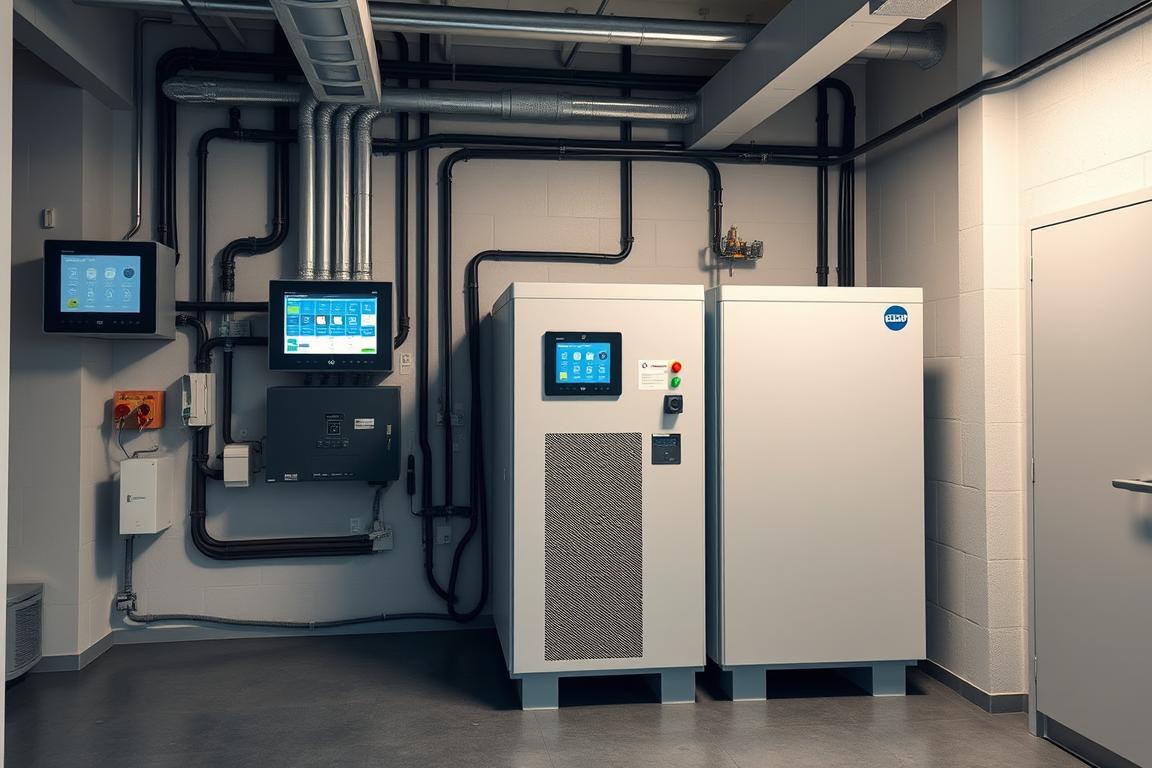
Battery Management Systems (BMS) are critical components in energy storage solutions, electric vehicles, and renewable energy applications. When designing or upgrading a battery system, one of the most significant decisions is choosing between centralized and distributed BMS architectures. This choice impacts not only system performance and reliability but also long-term cost-effectiveness. In this comprehensive analysis, we'll examine the financial implications of both architectures to help you make an informed decision that aligns with your specific application needs.

Figure 1: Structural comparison of centralized and distributed BMS architectures
A centralized BMS features a single control unit that manages all battery cells or modules. This central controller handles all monitoring, balancing, and protection functions for the entire battery pack. All sensors and measurement circuits connect directly to this central unit, creating a star-like topology.
According to a report by Grand View Research cited by MOKOEnergy, centralized BMS architectures contributed to over 43% of global BMS revenue in 2022, highlighting their significant market presence due to simpler design and lower initial costs.
In a distributed BMS, intelligence is spread across multiple controllers. Each battery module or cell group has its dedicated slave control unit that monitors local parameters. These slave units communicate with a master controller that coordinates the overall system operation. This creates a more complex but potentially more resilient network structure.
The distributed approach has gained popularity in applications requiring high reliability and scalability, with market research indicating a compound annual growth rate (CAGR) of 6.0% from 2023 to 2029 for distributed BMS systems.
KURUI Electronics offers both centralized and distributed BMS options tailored to your specific application needs.
Explore KURUI's BMS Solutions
Figure 2: Initial vs. long-term cost comparison between BMS architectures
When evaluating the cost-effectiveness of BMS architectures, it's essential to consider both initial investment and long-term operational expenses. Let's examine the key cost factors that influence the total cost of ownership (TCO) for both centralized and distributed BMS systems.
Centralized BMS typically requires less hardware, as a single controller manages the entire battery pack. This results in lower initial component costs compared to distributed systems, which require multiple controllers and communication interfaces.
According to industry data, centralized BMS hardware can cost 15-30% less than equivalent distributed systems for small to medium-sized battery packs (under 100kWh).
Centralized systems often require more complex wiring harnesses to connect all cells to the central controller. This can increase installation time and labor costs, especially for large battery packs or systems with physically dispersed components.
Distributed BMS may have higher component costs but can offer simpler installation with reduced wiring complexity, potentially offsetting some of the hardware cost difference.

Figure 3: Maintenance accessibility comparison between BMS architectures
Centralized BMS offers easier access to the main controller for maintenance and diagnostics. However, if the central unit fails, the entire system may be compromised. Maintenance costs can spike if the main controller requires replacement.
Distributed BMS allows for modular maintenance, where individual controllers can be serviced or replaced without affecting the entire system. This can reduce downtime and associated costs in critical applications.
Distributed BMS architectures typically offer higher reliability due to their redundant nature. If one controller fails, others continue to function, potentially reducing catastrophic failure costs. This improved reliability can significantly impact long-term operational costs, especially in applications where downtime is expensive.
Centralized systems present a single point of failure risk, which may necessitate backup systems in critical applications, adding to the overall cost.
Distributed BMS excels in scalability, allowing for easier system expansion by adding new modules with their controllers. This can be particularly cost-effective for growing energy storage systems or fleet applications where capacity needs may increase over time.
Centralized BMS may require complete replacement when expanding beyond the controller's capacity, potentially resulting in higher upgrade costs and system downtime.
The modular nature of distributed BMS allows for gradual technology upgrades, replacing components as needed rather than overhauling the entire system. This can spread upgrade costs over time and allow for incorporating new technologies as they become available.
Centralized systems typically require full replacement when upgrading, which can lead to higher periodic investment costs.

Figure 4: Energy consumption comparison between BMS architectures
Energy efficiency directly impacts operational costs over the system's lifetime. Distributed BMS may consume slightly more power due to multiple controllers, but this can be offset by more precise cell management and balancing, potentially extending battery life and improving overall system efficiency.
Centralized BMS typically consumes less power for control functions but may be less effective at fine-grained cell balancing, potentially reducing battery lifespan and overall energy efficiency in some applications.
| Cost Factor | Centralized BMS | Distributed BMS |
| Initial Hardware Cost | Lower (15-30% less for small systems) | Higher due to multiple controllers |
| Installation Cost | Higher wiring complexity and labor | Lower wiring complexity, potentially faster installation |
| Maintenance Cost | Lower for routine maintenance, higher for failures | Modular maintenance, lower downtime costs |
| Scalability Cost | High - may require full system replacement | Low - modular expansion possible |
| Energy Efficiency | Lower controller power consumption, potentially less effective balancing | Higher controller power consumption, better balancing efficiency |
| Battery Lifespan Impact | Moderate - less precise cell management | Better - more precise cell-level management |
| System Reliability Cost | Higher risk of complete system failure | Lower risk due to redundancy |
Figure 5: Total Cost of Ownership comparison across different application scales
KURUI's engineering team can provide a detailed cost analysis for your specific application requirements.
Request a Cost Analysis
Figure 6: Electric vehicle battery pack with distributed BMS implementation
A major electric vehicle manufacturer switched from centralized to distributed BMS architecture for their fleet vehicles. The initial investment increased by 22%, but they reported:
The distributed architecture proved more cost-effective over the vehicle's lifecycle despite higher initial costs, primarily due to improved reliability and battery longevity.

Figure 7: Commercial energy storage system with centralized BMS
A commercial energy storage provider compared both architectures for a 500kWh installation:
For this fixed-capacity installation with minimal expansion needs, the centralized architecture provided better overall cost-effectiveness due to lower initial investment and acceptable reliability for the application.

Figure 8: Industrial UPS system with modular battery architecture
A data center implemented distributed BMS for their critical power backup systems:
In this critical application where downtime costs were extremely high, the distributed architecture provided superior cost-effectiveness despite higher initial investment, primarily due to improved reliability and reduced operational disruptions.

Figure 9: Decision framework for BMS architecture selection based on cost-effectiveness factors

Figure 10: Commercial energy storage system with BMS integration

Figure 11: EV manufacturing with BMS integration during production
KURUI offers customized BMS solutions for residential, commercial, industrial, and EV applications.
Explore Application-Specific SolutionsThe cost-effectiveness of centralized versus distributed BMS architectures depends significantly on your specific application requirements, scale, and long-term objectives. While centralized BMS typically offers lower initial costs and simpler implementation, distributed architectures often provide better long-term value through improved reliability, scalability, and battery lifespan.
The true cost-effectiveness of a BMS architecture cannot be determined by initial investment alone. A comprehensive TCO analysis that includes operational costs, maintenance requirements, reliability factors, and expansion capabilities is essential for making an informed decision.
For smaller, budget-constrained applications with fixed capacity requirements, centralized BMS often provides the most cost-effective solution. For larger systems, critical applications, or installations requiring future expansion, the higher initial investment in distributed BMS typically pays off through improved operational benefits and reduced lifecycle costs.
As battery technology continues to evolve and energy storage applications become more diverse, the importance of selecting the right BMS architecture for your specific needs becomes increasingly critical. Working with experienced BMS providers who can offer tailored solutions based on your unique requirements is the best approach to ensuring optimal cost-effectiveness for your battery management system.
KURUI's team of over 20 experienced engineers can help you determine the most cost-effective BMS solution for your specific application.
Contact KURUI for Consultation